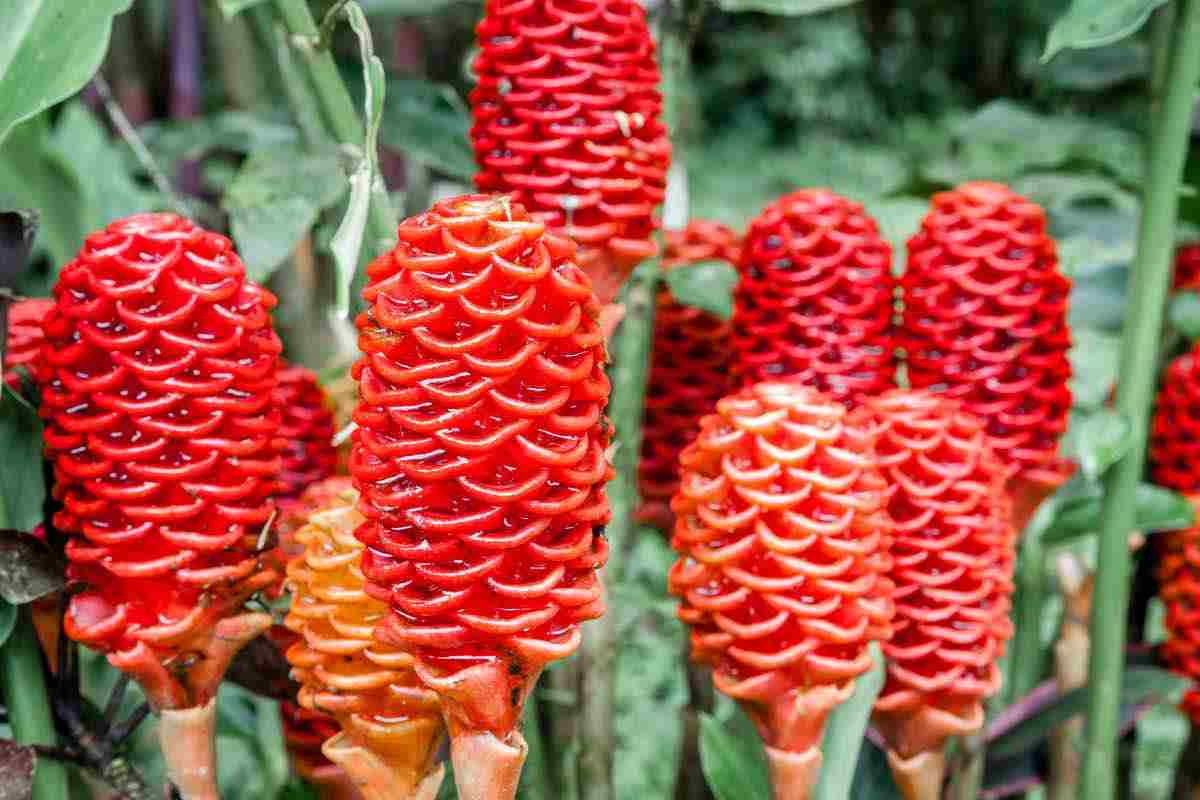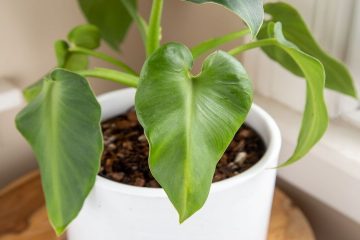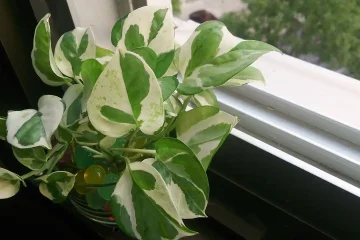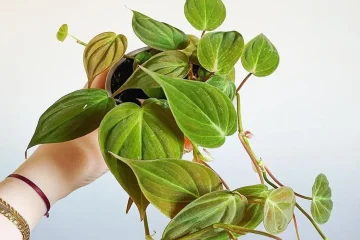Shampoo Ginger Lily (Zingiber zerumbet) is a tropical plant prized for its vibrant, cone-shaped inflorescence that produces a fragrant, soapy liquid used in hair and skin care. Native to Southeast Asia, this hardy perennial thrives in warm, humid climates, making it a popular choice for tropical and subtropical gardens. Growing Shampoo Ginger Lily involves planting its rhizomes or seeds in well-draining soil, providing ample water and partial shade it has a same growing habit as Pentas Plants while dealing with soil. Beyond its ornamental appeal, the plant offers various benefits, including natural moisturizing properties and traditional medicinal uses, making it a versatile and valuable addition to any garden.
| Attribute | Details |
|---|
| Botanical Name | Zingiber zerumbet |
| Common Name | Shampoo ginger lily, Awapuhi Kuahiwi, shampoo lily, red pinecone ginger, bitter ginger |
| Family | Zingiberaceae |
| Plant Type | Perennial herbaceous |
| Hardiness Zones | 8 – 12 (USDA) |
| Sun Exposure | Full sun to partial shade |
| Soil Type | Nutrient-rich, well-draining soil |
| Soil pH | Slightly acidic to neutral (5.7 to 8.0) |
| Maturity | 10 months |
| Height | 4 to 6 feet fall |
| Spacing | 24 to 36 inches |
| Bloom Time | Summer to early fall |
How To Grow & Care for Shampoo Ginger Lily Plants
Planting Shampoo Ginger Lily plants requires a well-draining soil mix rich in organic matter. Choose a spot with partial shade to mimic their natural habitat. Start by digging a hole twice the size of the rhizome, then place the rhizome with buds facing upwards. Cover it with soil and water thoroughly. Ensure the soil remains moist but not waterlogged. For optimal growth, maintain a temperature between 60-85°F. Incorporate “Shampoo Plans” into your gardening routine for organized care and management of your Shampoo Ginger plants. Proper planting ensures healthy growth and abundant blooms.
Watering and Fertilizing Shampoo Ginger Lily Plants
Shampoo Ginger Lily plants thrive in consistently moist soil also, and tropical and subtropical climates like Philodendron Micans. Water them regularly, ensuring the soil remains damp but not soggy. In dry climates, increase watering frequency to maintain moisture levels. Fertilize monthly during the growing season with a balanced liquid fertilizer to promote vigorous growth and vibrant flowers. Using compost or organic matter as a soil amendment can also enhance nutrient availability. Implementing “Shampoo Plans” will help keep track of your watering and fertilizing schedule, ensuring your Shampoo Ginger plants receive the care they need for optimal growth and health.
Pruning and Maintenance of Shampoo Ginger Lily Plants
Regular pruning and maintenance are essential for Shampoo Ginger Lily plants to encourage healthy growth and prevent disease. Trim dead or yellowing leaves to improve air circulation and reduce pest infestations. Cut back flower stalks after blooming to redirect energy to the rhizomes. Mulching around the base of the plant helps retain soil moisture and suppress weeds. Incorporate “Shampoo Plans” into your gardening regimen to monitor and manage pruning schedules effectively. By maintaining your Shampoo Ginger plants properly, you ensure robust growth and prolonged flowering periods, enhancing the plant’s overall aesthetics and health.
Shampoo Ginger Lily Plants Propagation
Propagating Shampoo Ginger Lily (Zingiber zerumbet) is a rewarding process. Here’s a step-by-step guide to help you successfully propagate these beautiful plants:
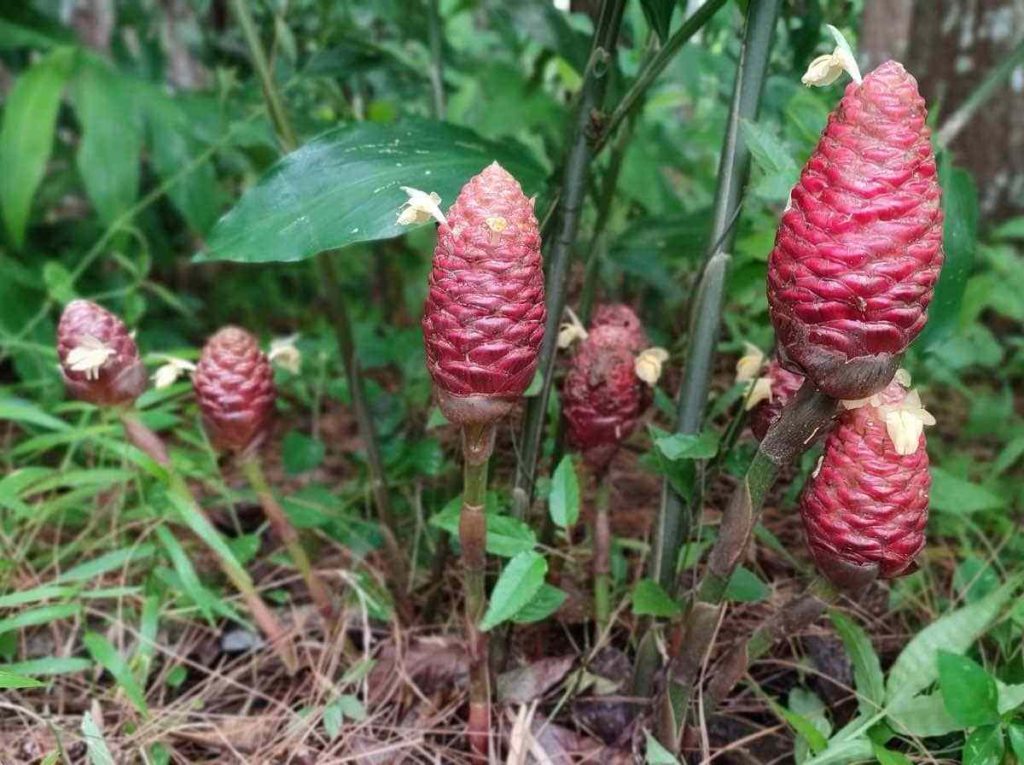
Propagation Methods
- Rhizome Division
- Seed Propagation
Rhizome Division
Rhizome division is the most common and effective method for propagating Shampoo Ginger Lily.
Materials Needed:
- A healthy parent plant
- Sharp, sterilized knife or garden spade
- Gloves
- Potting soil or garden bed
- Water
Steps:
- Choose the Right Time: Early spring or late winter is ideal for rhizome division.
- Dig Up the Plant: Carefully dig around the plant to expose the rhizomes. Lift the plant gently from the soil.
- Divide the Rhizomes: Use a sharp, sterilized knife or garden spade to cut the rhizomes into sections. Each section should have at least one or two growing buds or eyes.
- Prepare the Soil: If planting in a garden bed, enrich the soil with organic matter. If using pots, choose well-draining potting soil.
- Plant the Divisions: Plant the rhizome sections with the buds facing upward. Cover them with soil, ensuring the buds are just below the surface.
- Watering: Water the newly planted rhizomes thoroughly. Keep the soil consistently moist but not waterlogged.
- Care: Place the plants in a location with partial to full shade. Maintain regular watering and watch for new growth.
Seed Propagation
Seed propagation is less common and can be more challenging, but it’s possible if you have access to seeds.
Materials Needed:
- Seeds
- Seed trays or small pots
- Seed starting mix
- Plastic wrap or a propagator lid
- Water
Steps:
- Seed Collection: Collect seeds from mature seed pods if you have access to them.
- Prepare the Seed Trays: Fill seed trays or small pots with a seed starting mix.
- Sow the Seeds: Plant the seeds on the surface of the mix and lightly cover them with a thin layer of soil.
- Moisture and Covering: Mist the soil with water and cover the trays with plastic wrap or a propagator lid to retain humidity.
- Germination: Place the trays in a warm, bright location but out of direct sunlight. Maintain consistent moisture.
- Transplanting: Once the seedlings have developed a few sets of true leaves, they can be transplanted into larger pots or directly into the garden.
Shampoo Ginger Lily Plants Benefits
Shampoo Ginger Lily (Zingiber zerumbet), also known as ‘Awapuhi’ or ‘Pinecone Ginger,’ is a tropical plant known for its unique and beneficial properties. Here are some of the benefits of Shampoo Ginger Lily plants:
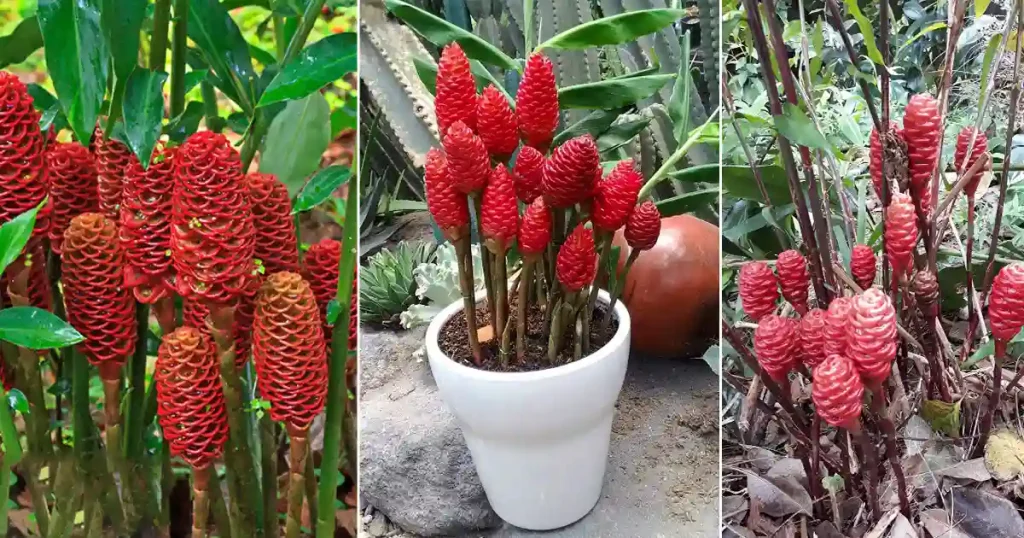
Health Benefits
- Hair Care:
- Natural Shampoo: The liquid extract from the flower cones can be used as a natural shampoo. It helps cleanse and condition the hair, leaving it soft and manageable.
- Scalp Health: It can help soothe the scalp and reduce dandruff due to its anti-inflammatory properties.
- Skin Care:
- Moisturizing: The gel-like sap from the cones can be applied to the skin as a moisturizer.
- Anti-inflammatory: It can help reduce skin inflammation and irritation, making it useful for minor skin conditions.
- Medicinal Uses:
- Digestive Health: The rhizome of Shampoo Ginger Lily has been traditionally used to treat digestive issues like indigestion and nausea.
- Anti-inflammatory and Analgesic: The rhizome extract has anti-inflammatory and analgesic properties, which can help in reducing pain and swelling.
- Antimicrobial: The plant possesses antimicrobial properties, which can help in treating infections.
Environmental Benefits
- Erosion Control:
- The dense root system of Shampoo Ginger Lily helps prevent soil erosion, making it useful in landscaping and soil conservation.
- Ornamental Value:
- The plant is aesthetically pleasing and is often used in gardens and landscapes for its attractive flowers and lush foliage.
Culinary Uses
- Flavoring Agent:
- In some cultures, the rhizome is used as a flavoring agent in cooking, similar to ginger, adding a unique flavor to various dishes.
Aromatherapy and Relaxation
- Aromatic Properties:
- The plant has a pleasant fragrance that can be used in aromatherapy to promote relaxation and reduce stress.
Cultural Significance
- Traditional Uses:
- In Hawaiian culture, Shampoo Ginger Lily, known as ‘Awapuhi,’ has been used for centuries in traditional medicine and personal care routines.
Incorporating Shampoo Ginger Lily into your routine can offer a variety of health and environmental benefits, making it a valuable addition to both home gardens and personal care products.
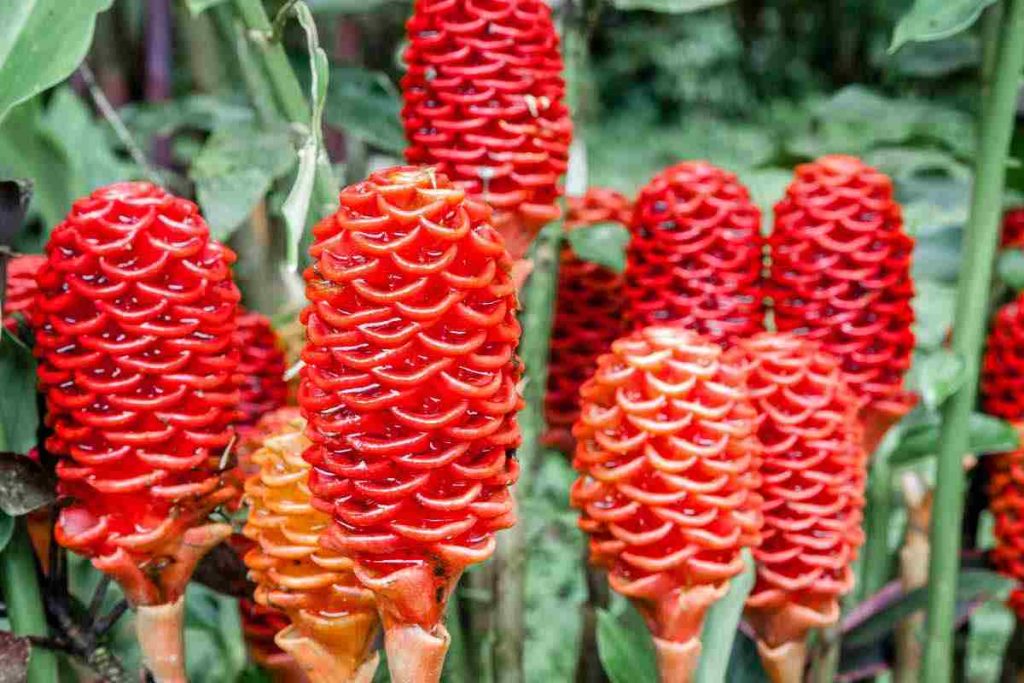
Common Pests and Plant Diseases for Shampoo Ginger Lily
Following are the common pests and plant diseases for Shampoo Ginger Lily that you can expect:
Aphids
Aphids are small, sap-sucking insects that often cluster on the underside of leaves and stems. They can cause distorted growth and yellowing leaves. To manage aphids, introduce natural predators like ladybugs, use insecticidal soap, or apply neem oil. Regularly inspecting plants can help catch infestations early.
Spider Mites
Spider mites are tiny, spider-like pests that thrive in hot, dry conditions. They feed on plant sap, causing stippling, yellowing, and leaf drop. To control spider mites, increase humidity, regularly wash leaves with water, or use miticides. Introducing predatory mites can also be effective.
Mealybugs
Mealybugs are small, white, cotton-like insects that feed on plant sap, weakening the plant and causing yellowing leaves. They excrete honeydew, leading to sooty mold growth. Control mealybugs by wiping them off with alcohol-soaked cotton swabs, using insecticidal soap, or introducing natural predators like ladybugs.
Scale Insects
Scale insects appear as small, round, or oval bumps on stems and leaves. They feed on sap, causing yellowing and leaf drop. To manage scale, prune heavily infested areas, use horticultural oil to smother them, or apply systemic insecticides. Beneficial insects like parasitic wasps can also help control scale populations.
Common Plant Diseases for Shampoo Ginger Lily
Rhizome Rot
Rhizome rot is a fungal disease that affects the plant’s underground stems, causing them to become mushy and discolored. It often results from overwatering or poor drainage. To prevent rhizome rot, ensure well-draining soil, avoid overwatering, and remove and discard infected rhizomes promptly.
Leaf Spot
Leaf spot is caused by various fungi and bacteria, leading to brown or black spots on leaves. These spots may have yellow halos and can cause premature leaf drop. Control leaf spot by ensuring good air circulation, avoiding overhead watering, and applying appropriate fungicides if necessary.
Rust
Rust is a fungal disease that causes orange, yellow, or brown pustules on the undersides of leaves. It weakens plants and reduces their vigor. To manage rust, remove and destroy infected leaves, avoid wetting foliage, and use fungicides if the infestation is severe. Ensure good air circulation around plants.
Anthracnose
Anthracnose is a fungal disease causing dark, sunken lesions on leaves, stems, and flowers. It spreads in warm, wet conditions. Control anthracnose by removing and destroying affected plant parts, ensuring good air circulation, and applying copper-based fungicides. Avoid overhead watering to reduce moisture on plant surfaces.

